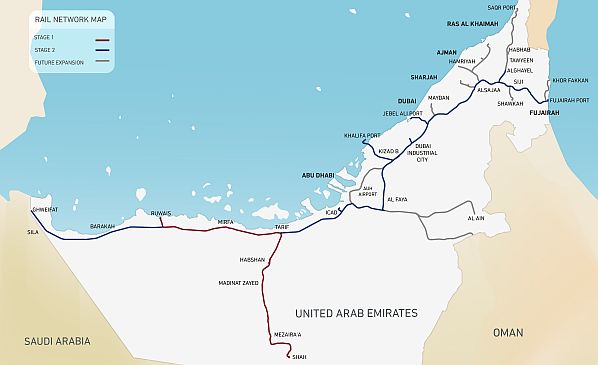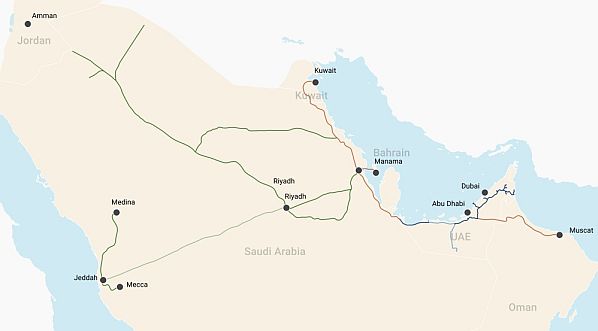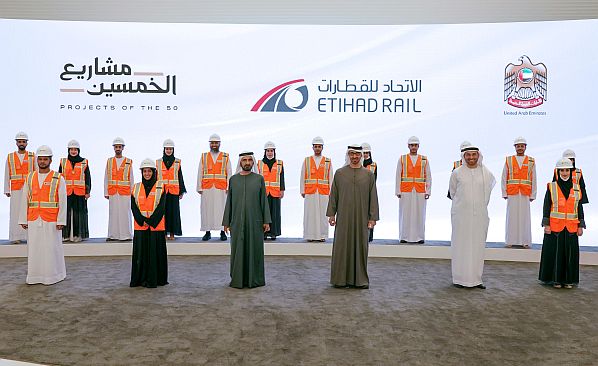A ceremony was held at Dubai’s Expo 2020 on December 5 to launch the United Arab Emirates’ (UAE) Dirhams 50bn ($US 13.6bn) UAE Railways Programme which will extend the existing rail network via Dubai to the port of Fujairah on the Gulf of Oman coast. The project is one the UAE’s Projects of the 50 aimed at accelerating development.
“Etihad Rail is the largest project to consolidate the strength of the union for the next 50 years,” Sheikh Mohammed bin Rashid Al Maktoum, UAE vice-president, prime minister and ruler of Dubai, said at the ceremony.
The programme comprises three elements. The first is to develop rail freight including Etihad Rail’s existing freight services. The second element will establish main line passenger rail services in the UAE for the first time. Trains will connect 11 cities within the UAE from Al Sila on the Saudi border to Fujairah running at a maximum speed of 200km/h. Passengers will be able travel from Abu Dhabi to Dubai in 50 minutes and from Abu Dhabi to Fujairah in 1h 40min. By 2030, the number of passengers is expected to reach more than 36.5 million annually.

The third element is the development of an integrated transport service, whereby an innovation centre will be set up to integrate smart transport solutions. Light rail lines will be connected to the main line passenger network to facilitate transport inside UAE cities. Smart applications and solutions will be developed to allow journeys to be planned and booked, the integration of logistics operations, port and customs services, and provide integrated logistics solutions.
The UAE government says the railway programme is expected to create 9000 jobs up to 2030. Construction of the rail network is expected to reduce carbon emissions by 70-80% and road maintenance costs by Dirhams 8bn. Tourism benefits are estimated at Dirhams 23bn during the next 50 years, while the public benefits to the UAE economy will reach Dirhams 23bn.
The first phase of the rail network, a 264km line from Shah and Habshan to the port of Ruwais, was completed in January 2016 and has carried 30 million tonnes of granulated sulphur to date. Stage two will add another 605km by extending the coastal section of the existing line to Ghuweifat on the border with Saudi Arabia and east to Fujairah.
Work on stage two started in 2018 and Etihad Rail says 27,000 people are working in more than 3000 constructions sites across the UAE and 70% of the project was achieved in less than 24 months despite the challenges presented by the Covid-19 pandemic.

For more data on Middle East rail projects, subscribe to IRJ Pro.

